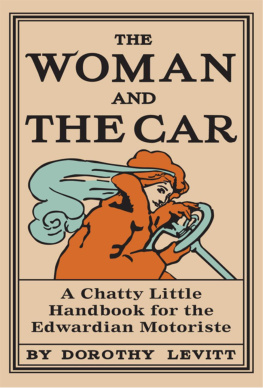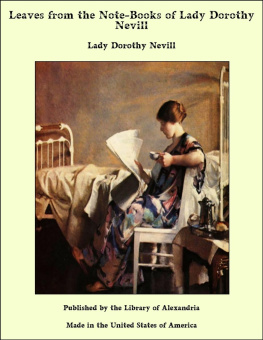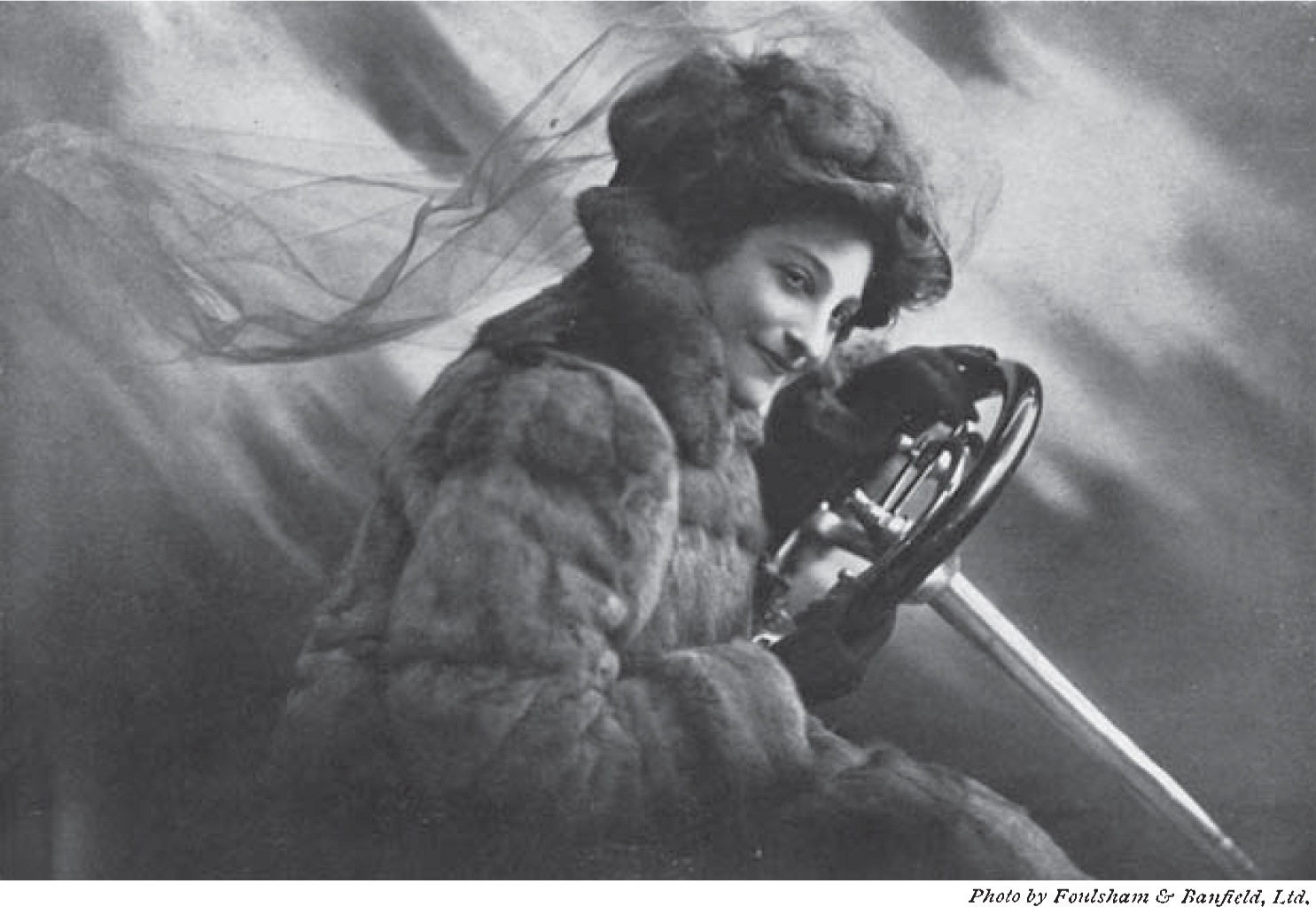THE WOMAN AND THE CAR
DOROTHY LEVITT Her favourite photograph
THE WOMAN AND THE CAR
INTRODUCTORY
I N presenting this book to the public the publisher is acting largely on the request of some hundreds of ladies, some already motorists, others would-be motorists. Miss Dorothy Levitt, last year, wrote a short series of articles for the Daily Graphic on the subject of Motoring for Women. These articles attracted a great deal of attention and Miss Levitt was inundated with letters from all parts of the United Kingdom and also from abroad, asking her for further information on various points and also begging her to publish the articles and additional information in volume form.
Miss Levitt was also asked to contribute articles on the same lines to many magazines and weekly publications and further received requests from a number of distinguished women to give them personal instruction in the art of driving and managing the mechanism of their cars.
As the simplest way out of answering all these requests Miss Levitt has revised and enlarged her former articles and has added new chapters and a great deal of matter which she believes every woman motorist or beginner will find of use.
There has been no attempt to make this volume a formal text-book on motoring for women but rather a chatty little handbook, containing simple and understandable instructions and hints for all women motorists, whether beginners or experts.
The facts contained in the various chapters are not those gathered from any standard manual of motoring but are from Miss Levitts own practical experience of six years daily driving, in all sorts of cars, in all sorts of weather and under all sorts of conditionspleasure trips, long-distance tours at home and abroad and in competitions.
There may be points here and there which she has overlooked. Miss Levitt, however, will answer such questions or furnish such further information as readers may properly desire, either through the medium of his Majestys mails or, perhaps, in a later edition of this volume.
The photographs, with which the several chapters are illustrated, were specially taken for the work by Mr. Horace W. Nicholls.
London, February 1909.
CONTENTS
ILLUSTRATIONS
Dorothy Levitt. Her favourite photograph. Photo by Foulsham & Banfield, Ltd. Frontispiece
DOROTHY LEVITT: A PERSONAL SKETCH
I T is not considered difficult for mere man to write about a pretty, young woman. Yet in the case of Dorothy Levitt it is difficult. There are so many things in her delightful private life which would have a vivid interest for the public. But I am forbidden to tread too deeply in that direction.
Dorothy Levitt is the premier woman motorist and botorist of the world. And she is ready to prove and uphold her title at any time.
In the United Kingdom, in France and in Germany, she has achieved distinctions, won success and carried off trophies such as no woman and few men can claim.
Five years ago Miss Levitt won the Championship of the Seas in the great motor-boat race at Trouville, France, defeating all comers.
Three years ago at Brighton she won a race and created a worlds record for women of 79 miles per hour. The following year she broke her own record and created a new worlds record for women of 91 miles an hour.
Looking at Miss Levitt one can hardly imagine that she could drive a car at such terrific speed. The public, in its minds eye, no doubt figures this motor champion as a big, strapping Amazon. Dorothy Levitt is exactly, or almost so, the direct opposite of such a picture. She is the most girlish of womanly women. Slight in stature, shy and shrinking, almost timid in her everyday life, it is seeming a marvel that she can really be the woman who has done all that the records show.
And the way in which she came to be a motoristit is a story in itself. She was from childhood a good cyclist, a good driver of horses, a rider to hounds and an excellent shot with rifle or gun. Fishing was her favourite pastime. She was quick of eye and sure of hand and nerves troubled her not at all.
A friend, owning a motor-car, paid a visit to the family in the West Country. In a very few days Dorothy Levitt had become well acquainted with the intricacies of that motor. She handled the wheel as well as the owner or his chauffeur. She attended, as a spectator, a county competition, driving the car with such skill that the attention was attracted of the manager of a big motor firm. He secured an introduction and asked her to drive one of his cars in a competition. She agreed and thus became the first Englishwoman to drive a motor-car in a public competition.
Her first prize was won a month later, and since then she has steadily mounted the tree of her chosen profession. Yet she has remained an amateur, accepting no money prizes, only medals and cups and such like trophies.
In hill climbs, endurance and speed trials she is alike invincible. At the first aerial hare-and-hounds race of balloons this year she was selected as the umpire. The most careful, as well as intrepid and fast-driving motorist, was wanted. Miss Levitt unerringly followed the hare from London to near Arundel, Sussex, and was on the spot when the first balloon among the hounds descended near the hare.
Miss Levitt has been offered many enticing professional engagements on the Continent and in the United States but prefers to remain at home and an amateur.
In appearance Dorothy Levitt looks partly French, partly Irish, with a soupon of American. Yet she is wholly English. Of medium height, her figure is slim and very graceful. She has a very girlish but expressive face, large eyes that are brown and grey and green in varying lights, brown hair that curls, a straight nose that has the bare inclination of a saucy upward tip and a mouth which is too large. It is a charming, winning face.
The one fault of Dorothy Levitt is her modesty, almost amounting to bashfulness. One cannot get her to tell much of her many exciting adventures, particularly those of which she is the heroine. She is immensely popular, has been toasted by Royalty at German motor banquets, elected honorary member of many of the first automobile clubs in this country and on the Continent, and has a host of friends, some in the sacred circles of society, others distinguished men and women of the more Bohemian circles of art and literature, music and the drama. She is an inveterate first-nighter, wears simple but ravishing clothes and, to those who do not know her, passes as a bright butterfly of fashion.
In a flat in a quiet but fashionable neighbourhood in the West-end of London, Miss Levitt lives the life of a bachelor girl. There she has a housekeeper and maid and a tiny Pomeranian, one Dodo, to keep her company. The flat contains, as its feature rooms, a Louis XIV. drawing-room and a Flemish dining-room, the latter the scene of many little luncheon parties for which Miss Levitt is also famous.











